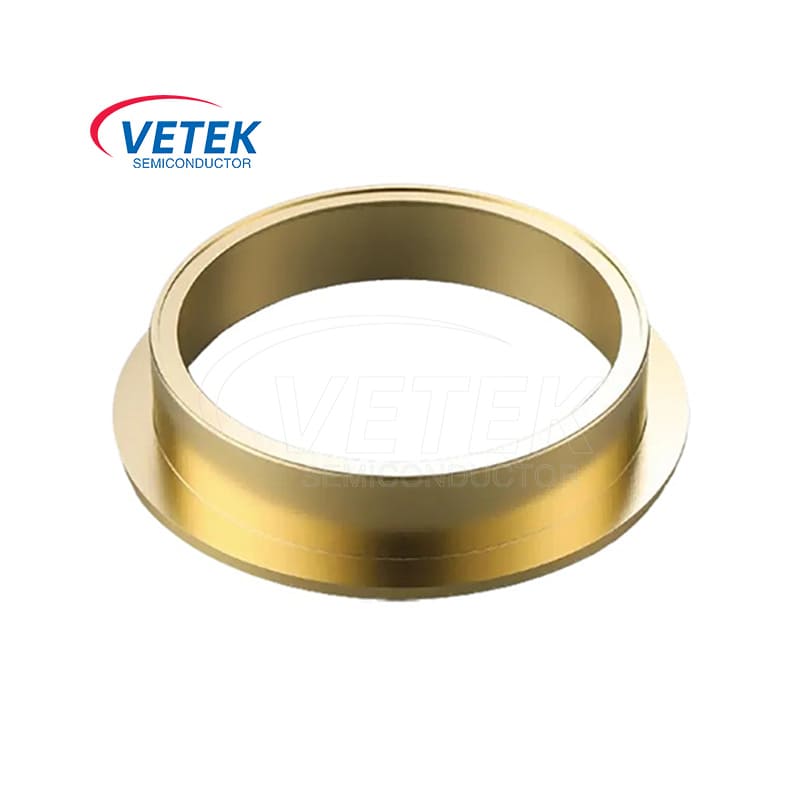Cost-Benefit Analysis of Tantalum Carbide Coatings in the Oil Industry
2025-01-14
In the oil industry, equipment and materials face some of the most demanding operating conditions. From extreme temperatures and high pressures to corrosive environments and abrasive wear, the industry relies heavily on high-performance materials that can withstand these challenges. One such material that is gaining attention is tantalum carbide (TaC), a super-hard ceramic with excellent wear resistance, thermal stability, and corrosion resistance.
Tantalum carbide coatings are increasingly being used in oilfield equipment, such as drill bits, pumps, and valves, to enhance performance and extend the life of critical components. However, the high cost of tantalum carbide coatings raises important questions: are the benefits worth the investment? In this article, we’ll perform a cost-benefit analysis to help determine the economic impact of using tantalum carbide coatings in the oil industry.
1. What are Tantalum Carbide Coatings?
What exactly are tantalum carbide coatings, and why are they used in the oil industry?
Tantalum carbide is a hard ceramic material known for its extreme hardness (it ranks just below diamond) and excellent wear resistance. When applied as a coating, tantalum carbide provides a protective layer that shields underlying materials from wear, erosion, and chemical degradation.
In the oil industry, these coatings are particularly useful for components exposed to harsh environments, including drilling equipment, pumps, valves, and tubing, where they provide several advantages:
- Enhanced wear resistance against abrasion from rock formations and drilling mud.
- Corrosion resistance in the presence of harsh chemicals, saltwater, and sulfur compounds.
- High-temperature stability, allowing components to function in extreme conditions.
2. Costs of Tantalum Carbide Coatings
What are the primary costs associated with using tantalum carbide coatings in the oil industry?
While tantalum carbide coatings offer numerous benefits, the initial costs associated with their application can be significant. Key cost factors include:
1. Material Costs:
Tantalum carbide itself is an expensive material, primarily due to the high cost of raw tantalum and the specialized manufacturing processes required to produce the coating. The material cost can significantly increase the price of coated components compared to standard uncoated alternatives.
2. Coating Application Costs:
Applying tantalum carbide coatings typically involves sophisticated techniques such as chemical vapor deposition (CVD), physical vapor deposition (PVD), or laser cladding, all of which require advanced equipment and skilled labor. These processes can be expensive and time-consuming, adding to the overall cost of coated components.
3. Maintenance and Application Down Time:
Applying the coating to equipment can cause downtime during maintenance or new installations. This downtime must be factored into the cost, especially in industries like oil drilling, where time is money and equipment needs to be operational as much as possible.
4. Replacement and Disposal Costs:
While tantalum carbide coatings can extend the life of components, they may still wear down over time and eventually require replacement. Moreover, proper disposal of worn-out coated components could incur additional costs, particularly when dealing with hazardous materials.
3. Benefits of Tantalum Carbide Coatings
What are the key benefits that tantalum carbide coatings bring to the oil industry?
The benefits of tantalum carbide coatings are numerous, and they can have a significant long-term economic impact on the oil industry. Some key benefits include:
1. Increased Component Lifespan:
One of the most significant advantages of tantalum carbide coatings is their ability to extend the lifespan of critical equipment. In oilfield operations, components such as drill bits and pumps experience extreme wear due to constant friction, abrasive particles, and harsh chemicals. Tantalum carbide coatings significantly reduce this wear, enabling these components to last longer than their uncoated counterparts.
- For example, drill bits can last up to three to five times longer when coated with tantalum carbide, resulting in fewer replacements and reduced operational interruptions.
2. Improved Performance:
Tantalum carbide coatings enhance the performance of oilfield components. Their wear resistance allows for more efficient drilling, better fluid handling, and improved pump performance, reducing energy consumption and downtime. The result is greater productivity and more efficient operations, which ultimately translates into higher returns on investment.
3. Reduced Maintenance and Repair Costs:
The enhanced durability provided by tantalum carbide coatings reduces the frequency of maintenance and repair cycles. With fewer breakdowns and part replacements, companies can reduce the overall maintenance costs and avoid expensive downtime. In some cases, the reduced need for repairs can offset the initial high cost of applying the coating.
4. Corrosion Resistance in Harsh Environments:
The oil and gas industry often operates in highly corrosive environments, such as offshore drilling or deep-water exploration, where equipment is exposed to saltwater, high-pressure fluids, and chemicals. Tantalum carbide coatings provide exceptional corrosion resistance, preventing premature failure of critical components. This reduces the costs associated with corrosion-related failures and prolongs the operational life of assets.
5. Energy Efficiency:
Tantalum carbide's wear-resistant properties also lead to lower friction in moving parts. For example, pumps and valves coated with tantalum carbide experience less friction, meaning they operate more smoothly and efficiently. This leads to reduced energy consumption and contributes to cost savings over time.
6. Lower Total Cost of Ownership:
While the initial investment in tantalum carbide-coated components can be high, the extended lifespan, reduced maintenance, and improved efficiency result in a lower total cost of ownership over the long term. For oil companies, this means lower long-term operational expenses despite the high upfront costs.
4. Cost-Benefit Comparison:
To provide a clearer picture of the financial impact, let’s look at a hypothetical example of using tantalum carbide coatings in the oil industry.
Scenario: Coating Drill Bits with Tantalum Carbide
- Uncoated Drill Bit:
- Initial cost: $2,000 per drill bit
- Lifespan: 1,000 meters of drilling
- Replacement cost: $2,000 per bit after each 1,000-meter interval
- Maintenance cost: $500 per maintenance cycle
- Tantalum Carbide-Coated Drill Bit:
- Initial cost: $4,500 per drill bit
- Lifespan: 3,000 meters of drilling (3 times longer)
- Replacement cost: $4,500 per bit after each 3,000-meter interval
- Maintenance cost: $200 per maintenance cycle (due to reduced wear)
In this scenario, despite the initial higher cost of tantalum carbide-coated drill bits, the total cost of ownership is significantly lower over the long term. The reduced maintenance costs, longer lifespan, and fewer replacements lead to savings of $2,200 for every 3,000 meters drilled.
5. Conclusion: The Economic Viability of Tantalum Carbide Coatings in the Oil Industry
Are tantalum carbide coatings worth the investment in the oil industry?
Based on the cost-benefit analysis, the answer is a resounding yes. While the initial investment in tantalum carbide coatings can be high, the long-term savings are substantial. The extended lifespan of components, reduced downtime, lower maintenance costs, and improved efficiency all contribute to a lower total cost of ownership over time.
For oil companies operating in challenging environments, where downtime and equipment failure are costly, tantalum carbide coatings offer a high return on investment. The material’s superior wear resistance, corrosion resistance, and thermal stability make it an ideal choice for critical oilfield equipment.
Ultimately, the decision to invest in tantalum carbide coatings will depend on the specific needs and budget of each operation. However, for companies focused on maximizing efficiency and minimizing operational disruptions, tantalum carbide coatings are likely to be a wise investment in the future.



